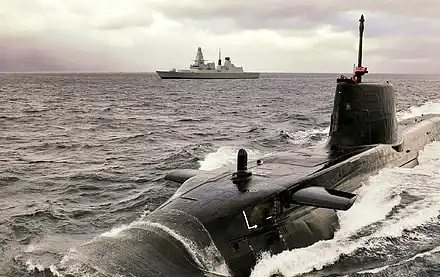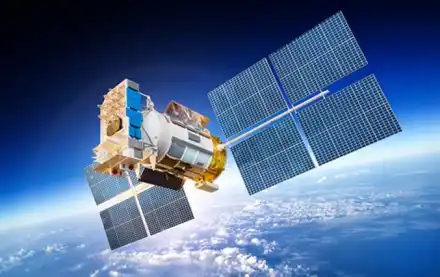




Cesare
The Boeing E-7 Wedgetail is a remarkable twin-engine airborne early warning and control aircraft, featuring a fixed, active electronically scanned array radar antenna based on the Boeing 737 Next Generation platform. The E-7 has been chosen by several prominent air forces around the world, including the Royal Australian Air Force, the Turkish Air Force, the Republic of Korea Air Force, and the United Kingdom. Notably, the United States Air Force recently announced that the E-7 will replace the E-3 starting in 2027, marking a significant milestone in airborne surveillance and control capabilities.
Design and development
The Peace Eagle project, which commenced in 1986, represents the Australian Department of Defence's endeavour to assess industry proposals for airborne surveillance and early warning systems. The initiative culminated in the approval of the initial phase of Project Wedgetail in 1994, leading to the issuance of a request for proposal (RFP) in 1996. The RFP aimed to procure aircraft for the Royal Australian Air Force (RAAF) under Project Wedgetail, honouring the indigenous eagle. In 1999, Boeing Integrated Defense Systems was contracted to supply four AEW&C aircraft, with options for an additional three.
The AEW&C aircraft, equivalent to the 737-700ER, integrates the Northrop Grumman Electronic Systems Multi-Role Electronically Scanned Array (MESA) radar. Positioned on a dorsal fin atop the fuselage, the electronically scanned AEW and surveillance radar, known as the "top hat," is finely engineered to minimize aerodynamic impact. With a maximum range of over 600 kilometres in look-up mode, the radar enables simultaneous air and sea search, fighter control, and area search. Its 360-degree azimuth scan is facilitated through two broadside electronic manifold arrays, each covering two 120° sectors from starboard and port, in addition to an end-fire array within the top hat that encompasses a 60° front and back of the aircraft.
Notably, the radar antenna array also serves as an ELINT array, offering a maximum range of over 850 kilometres at 9,000 meters (30,000 ft) altitude. The radar signal processing equipment and central computer are seamlessly integrated directly beneath the antenna array.
Furthermore, in September 2007, Boeing completed the first Peace Eagle test flight. By June 4, 2008, it was announced that Peace Eagle 2, the second AEW&C aircraft, had completed modifications, with flight and mission system checks finalized in the third quarter of 2008. To meet the current operational needs of the Air Force and address software obsolescence, a project contract for modernizing the E-7 Peace Eagle aircraft in the Turkish Air Force inventory was signed at IDEF 2023. The modernization effort includes equipping the aircraft with IFF Mode 5 Responder, Karetta CRPA Antenna, and Mission Computer Hardware developed by Aselsan.
Overall, the PEACE EAGLE Project has facilitated the integration of advanced solutions to provide Airborne Early Warning and Control capabilities to the Turkish Air Forces. The system comprises 4 AEW AEW&C aircraft in the Airborne Segment and 1 Ground Support Segment.
Turkiye
HAVELSAN played a vital role in the project by leveraging its expertise in command and control, intelligence, surveillance, and reconnaissance systems to develop mission system software for the airborne segment and design, develop, and deliver the ground support segment.
The AEW&C system functions as the command-and-control centre in the skies, carrying out activities such as air operations management, decision-making, intelligence, surveillance, and reconnaissance using state-of-the-art technologies.
Following the successful completion of the delivery phase, HAVELSAN continues to provide Integrated Logistics Support (ILS) solutions with its experienced engineering pool and offers engineering and maintenance support.
The AEW&C System is composed of the Ground Support Segment (GSS) and the 4 aircraft AEW&C Airborne Segment. The AEW&C Aircraft consists of sub-systems such as Radar/IFF, Electronic Support Measures (ESM), Communication and Data Link (CDL), Mission Navigation, Mission Avionics, Mission Computer, and Platform (Boeing 737-700).
HAVELSAN designed, developed, and delivered the Ground Support Segment in three subsystems:
Software Support Centre Subsystem (SSC) for updating, testing, configuration control, and implementing new versions of the mission software components.
Additionally, utilizing "Live Communication" capabilities, the SSC serves as the 5th aircraft on the ground for integration and testing of the new software, thus extending the AEW&C System capabilities.
On 10 February 2014 Boeing helped Turkey improve its self-defense capabilities with the delivery of the first Peace Eagle Airborne Early Warning and Control aircraft. Boeing delivered the aircraft to Konya Air Base, the fleet's main operating base. The Turkish Armed Forces (TAF) now has advanced airborne surveillance and battle management capabilities, and can simultaneously track airborne and maritime targets, with the first of four AEW&C aircraft it has received from Boeing.
"The Peace Eagle program is an example of great cooperation among the Turkish government and our excellent Turkish industry teammates, including Turkish Aerospace Industries, HAVELSAN, Turkish Airlines and MiKES," said Mark Ellis, Peace Eagle program manager for Boeing. "What's more, the aircraft can be used immediately because initial training for mission system operators, maintenance crews and pilots has been completed."
On 09 December 2015 Boeing delivered the fourth and final Peace Eagle Airborne Early Warning & Control (AEW&C) aircraft to the Turkish Air Force at Konya Air Base, completing the Turkish AEW&C fleet and enhancing Turkey’s airspace surveillance and battle management capabilities. This final aircraft includes upgraded software for the platform and the final element of the ground support segment, the Software Support Center (SSC). Previously delivered Peace Eagles will receive the upgraded software soon. Boeing worked with Turkish industry partners Turkish Aerospace Industries, Turkish Airlines, HAVELSAN and ASELSAN to complete the delivery of the final aircraft as well as establish technology capabilities like the Software Support Center, updated mission simulator software and mission support centre software.
HAVELSAN is also the only foreign company licensed by the U.S. Government to receive critical source codes. Peace Eagle 1 was modified and tested by Boeing in the US, while Peace Eagle 2, 3 and 4 were modified and tested at TAI's facilities in Ankara, Turkey, in partnership with Boeing and several Turkish companies. In 2006, the four Peace Eagles were scheduled to be delivered in 2008.